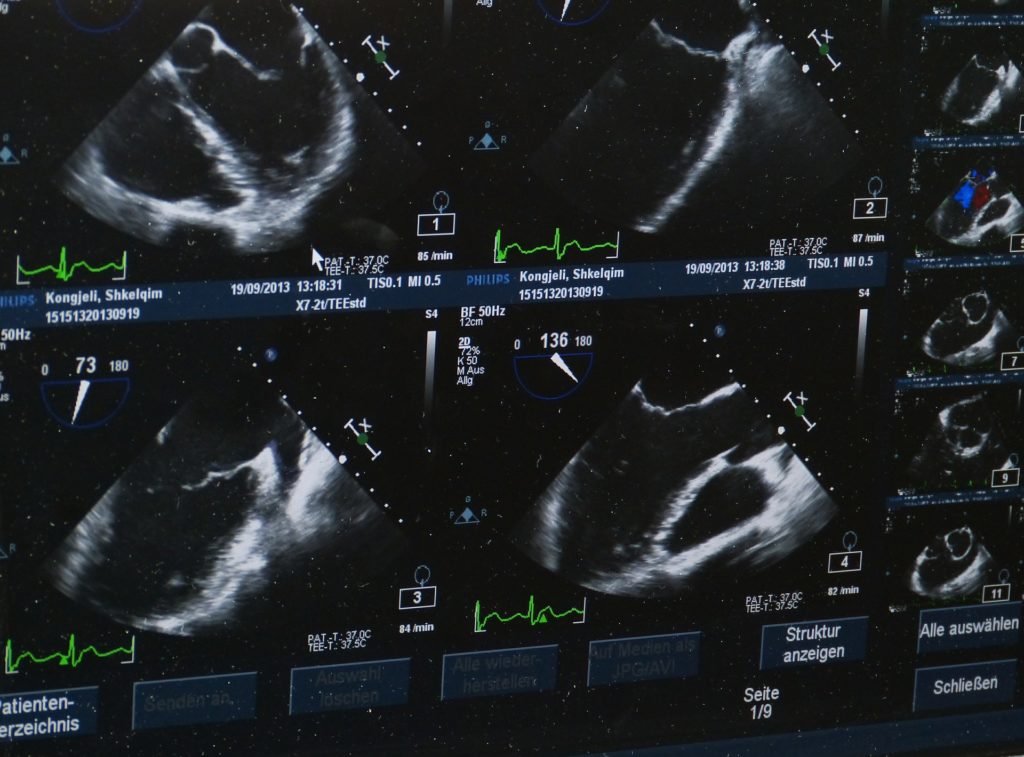An ultrasound is a painless diagnostic technique that makes use of sound waves that travel through the body, as a result, they bounce off tissues and organs in certain ways. The reflected waves can be used to make images of the organs inside. Since there is no radiation, these waves do not hurt the body. Ultrasound imaging may be done in a health provider’s office, or in a hospital, or in an outpatient facility, depending upon the reason and details of the case.

Your doctor will decide on this. There is not much to be done before an ultrasound procedure, The patient is asked to lie on the exam table, a clear, water-based gel is applied on the skin over the part to be checked. This gel helps the handheld probe(transducer) to move over the part, and allow sound waves go through the body. During ultrasound exams of the prostate, a specially designed probe is inserted into the rectum.
Types of Radiation
Ultrasounds can be used to view different organs in the body, they are of different types:
Bladder Ultrasound
Kidney (Renal) Ultrasound
Scrotum / Testicular Ultrasound
Prostate Ultrasound (with biopsy)
Other uses
Bladder Ultrasound

The most common reason for bladder ultrasound is to check for bladder draining (urine remains in the bladder after urinating- post-void residual). The problems that occur because of this could be as follows:
- Enlarged prostate
- Urethral stricture(narrowing)
- Bladder dysfunction
Ultrasound of the bladder can give information about :
- The bladder wall
- Diverticula(Pouches) of the bladder
- Prostate size
- Stones
- Large tumors in the bladder
Bladder ultrasound does not check the ovaries, uterus, or colon.
Kidney / Renal Ultrasound

Renal ultrasound studies can show the size and position of the kidneys. They also show the following:
- Blockages
- Stones
- Tumors
Scrotum / Testicular Ultrasound

Testicular ultrasound helps in the evaluation of almost all issues in the
scrotum(the sac containing the testicles) :
- It can detect patterns that form cancer, or if a mass is intratesticular, extratesticular, solid or cystic.
- It is used to detect testicular torsion, and problems with blood flow in the testis.
- It can be used to prevent testicular death.
Prostate Ultrasound

- Prostate ultrasound is commonly used to evaluate the risk of prostate cancer in men. It is also known as transrectal ultrasound.
- Early cancer cannot easily be diagnosed by ultrasound alone.
- A tissue sample (biopsy) of the prostate is done.
- To diagnose prostate disease, your doctor will have to examine your prostate gland as well as the nearby tissues.
- Almost 70% of prostate cancer malignancies are found in the outer zone of the prostate, by the rectum.
- Prostate ultrasound can measure the volume or size of the prostate to help plan the treatment.
- This test is also used to plan prostate surgery or other therapy (thermal therapy).
- The study can measure prostate-specific antigen density.
Other Uses
- Evaluation of Infertility
- Evaluation of the Female Urethra
- Paediatric Urology
- Evaluation of Blood Flow
Contact 080 28483939 for more information on Ultrasound Imaging at our
Specialized Clinic, ReSCUE Urology Hospital in Bangalore, Kengeri.



